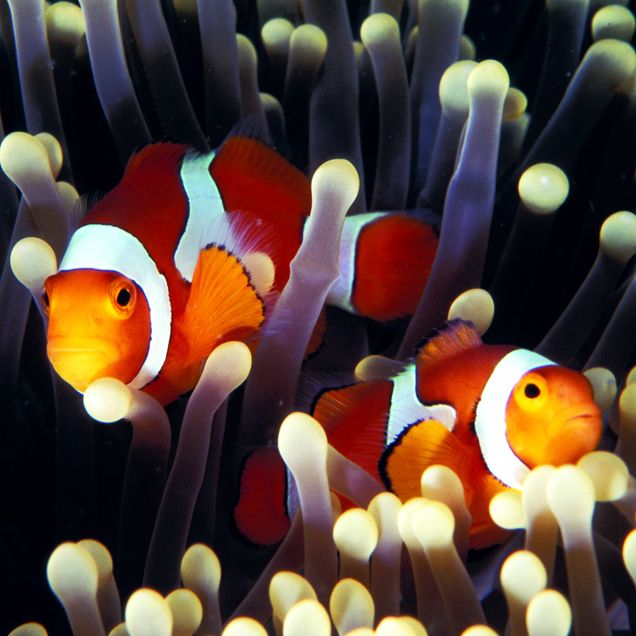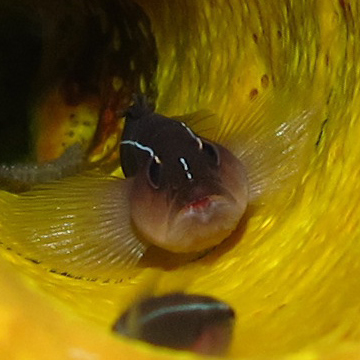Benefits to Society
Laying Foundations for Clown Anemonefish as Medical Models
 Clown anemonefish Amphiprion percula are remarkable animals exhibiting a number of fascinating traits. Some of these traits, e.g., their strategic growth regulation and extraordinary life spans, may have medical significance: clownfish are able to turn the growth of their skeletons, sensory systems and internal organs on and off in response to changes in social context (link); clownfish have a life expectancy of 30+ years, which is six times longer than the longevity expected for a fish of that size (link). In many ways they are similar to the highly social mole-rats in this regard (1,2,3,4,5). With genomic and transcriptomic resources now available (1,2) we can investigate the mechanistic basis of these traits. From 2020, we will be able to provide clownfish to the community on request.
Clown anemonefish Amphiprion percula are remarkable animals exhibiting a number of fascinating traits. Some of these traits, e.g., their strategic growth regulation and extraordinary life spans, may have medical significance: clownfish are able to turn the growth of their skeletons, sensory systems and internal organs on and off in response to changes in social context (link); clownfish have a life expectancy of 30+ years, which is six times longer than the longevity expected for a fish of that size (link). In many ways they are similar to the highly social mole-rats in this regard (1,2,3,4,5). With genomic and transcriptomic resources now available (1,2) we can investigate the mechanistic basis of these traits. From 2020, we will be able to provide clownfish to the community on request.
Collaborating with Mahonia Na Dari Research and Conservation Center
 We are working with Mahonia Na Dari Research and Conservation Center in Kimbe Bay, Papua New Guinea, to support their Marine Environment Education Programs for school and college students. When we are in the field, we assist their staff with practical skill training sessions and demonstrations of research techniques for their student programs. At other times, we provide peer review of their program materials. Since 1997, Mahonia Na Dari has worked with thousands of students and teachers and helped to promote the protection of Papua New Guinea’s biodiversity and sustainable use of marine resources by local communities.
We are working with Mahonia Na Dari Research and Conservation Center in Kimbe Bay, Papua New Guinea, to support their Marine Environment Education Programs for school and college students. When we are in the field, we assist their staff with practical skill training sessions and demonstrations of research techniques for their student programs. At other times, we provide peer review of their program materials. Since 1997, Mahonia Na Dari has worked with thousands of students and teachers and helped to promote the protection of Papua New Guinea’s biodiversity and sustainable use of marine resources by local communities.
Advocating for Stepping Stones in Networks of Marine Reserves A growing body of scientific research has demonstrated that marine protected areas, particularly no-take marine reserves that exclude extractive activities like fishing, can increase biodiversity and sustain fisheries within the reserves. For reserves to conserve marine biodiversity most effectively, they must be embedded in networks that are connected such that marine life from one reserve can repopulate other reserves. Our research using the neon goby Elacatinus lori shows that some larval fish are not traveling very long distances, and that pattern is likely stable over long-periods of time. This result suggests that large marine reserves will need stepping stone reserves to help some short distance dispersers move between them. (D’Aloia et al. 2015; Press release).
A growing body of scientific research has demonstrated that marine protected areas, particularly no-take marine reserves that exclude extractive activities like fishing, can increase biodiversity and sustain fisheries within the reserves. For reserves to conserve marine biodiversity most effectively, they must be embedded in networks that are connected such that marine life from one reserve can repopulate other reserves. Our research using the neon goby Elacatinus lori shows that some larval fish are not traveling very long distances, and that pattern is likely stable over long-periods of time. This result suggests that large marine reserves will need stepping stone reserves to help some short distance dispersers move between them. (D’Aloia et al. 2015; Press release).